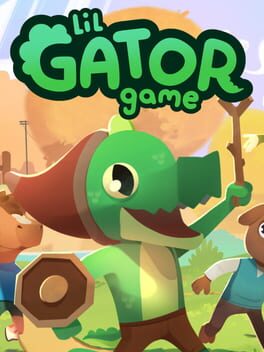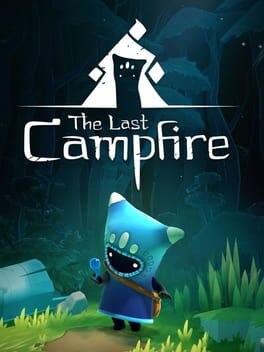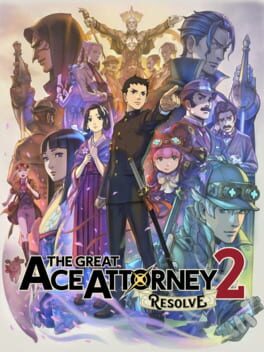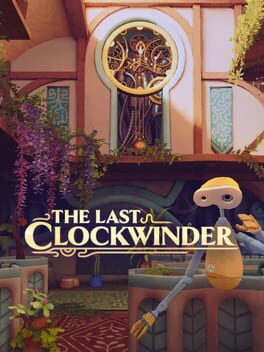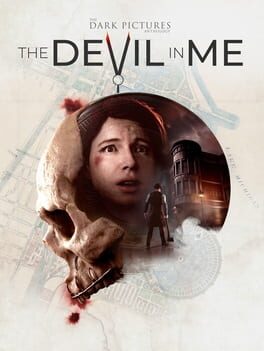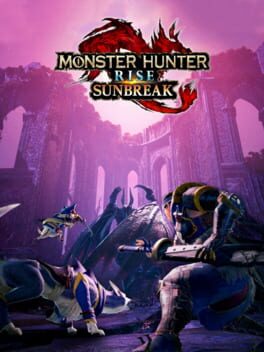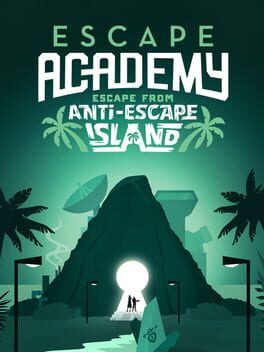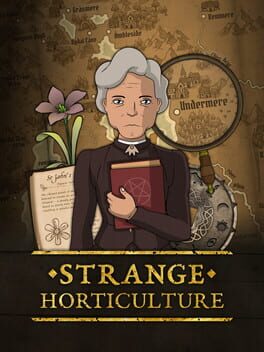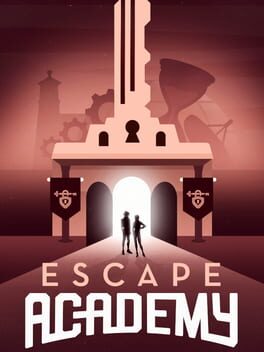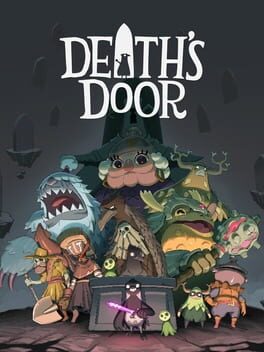Jason0278
2022
For a small indie game like this, it's insane how well realized this world is. How well written the characters. How good and how diverse the play controls. I felt joy just running (and climbing, water skipping, ground surfing, ragdolling, etc.) all over the island, accomplishing simple quests but also making connections and building toward something special. 'Lil Gator Game' recalled titles like 'A Short Hike' and 'Alba: A Wildlife Adventure' but it has play mechanics and a story all of its own.
'Lil Gator Game' is a LARPing adventure for the player character and also a story about games and the different ways people interface with them. One thing I really loved about 'Lil Gator Game' is how it helps the player to 100%. You need to make 36 friends to get the credits to roll and I considered finishing it there. Without an in-game map, 100% seemed too daunting an ask. But post-credits, your friends hook you up with everything you need to find absolutely everything you missed. So satisfying. Joyful all the way to 100%.
'Lil Gator Game' is a LARPing adventure for the player character and also a story about games and the different ways people interface with them. One thing I really loved about 'Lil Gator Game' is how it helps the player to 100%. You need to make 36 friends to get the credits to roll and I considered finishing it there. Without an in-game map, 100% seemed too daunting an ask. But post-credits, your friends hook you up with everything you need to find absolutely everything you missed. So satisfying. Joyful all the way to 100%.
2020
The puzzles of ‘The Last Campfire’ reminded me of the shrines in ‘Breath of the Wild.’ Each one a simple and singular puzzle to allow the player character, Ember, to reach the (close by) goal. I appreciated that it was a short and relatively gentle experience. I only got stumped once early on before I really understood the control language of the game. The Icelandic-flavored narration was far too twee for my tastes so I found myself trying to read faster than the narrator, so I could skip the audio. Despite ‘The Last Campfire’ being all about death and fear, I did find something comforting about the ending as, I suspect, was intended. Dying is scary, yes, but everyone else is also dying, so we’re all in this together. I don’t think ‘The Last Campfire’ is a game anyone needs to make a priority but it’s worth playing, especially when it goes on sale. I paid $2.99 for it and it was certainly worth it.
It took me 45 hours to complete 'The Great Ace Attorney 2: Resolve' and I'm afraid that is far too long to expect a player to stay maximally engaged. That said, I did find 'Resolve' remarkable for turning the previous game 'Adventures' into a incomplete prologue to the real story of this series. I finished 'Adventures' feeling like the loose ends were tied up. Boy, was I wrong. If you leave the series after 'Adventures,' you truly do not understand these characters and how they relate to one another and the world around them. If nothing else, 'Resolve' is eye opening.
Although there are the typical five chapters in this game, there are only four cases, one of which is a quick throwaway. The final two chapters cover a single case and let me tell you, that one case alone is longer than some entire 'Ace Attorney' games. I was most interested in this game when the scope was small and the characters colorful, as was certainly true of the case that connected the world's fair to science (fiction) experiments to a gruesome wax museum. Less successful were the resolutions to the series's largest scale, globe-spanning mysteries.
I would play more games in this setting and with Ryunosuke as the lead, but I'm hoping for Phoenix Wright (and Apollo, Trucy, Athena, Miles, Pearl, etc.) to return in the inevitable next 'Ace Attorney' installment.
Although there are the typical five chapters in this game, there are only four cases, one of which is a quick throwaway. The final two chapters cover a single case and let me tell you, that one case alone is longer than some entire 'Ace Attorney' games. I was most interested in this game when the scope was small and the characters colorful, as was certainly true of the case that connected the world's fair to science (fiction) experiments to a gruesome wax museum. Less successful were the resolutions to the series's largest scale, globe-spanning mysteries.
I would play more games in this setting and with Ryunosuke as the lead, but I'm hoping for Phoenix Wright (and Apollo, Trucy, Athena, Miles, Pearl, etc.) to return in the inevitable next 'Ace Attorney' installment.
2022
'The Last Clockwinder' is special for being a game that would be impossible outside of VR. It is a fruit collecting, seed generating puzzle game that relies on physical dexterity as much as it does strategy. In order to build assembly line engines to perform the tasks of collecting, assembling, and storing fruit-based contraptions, 'The Last Clockwinder' has you perform physical actions that you record and that will then repeat ad nauseam. So the factory floor becomes filled with automaton bots that accomplish much more than you could alone. The puzzles are fun if not too varied. The different fruits behave differently and you'll come to enjoy working with some over others. Luftapples especially have a chaos to their movement that doesn't replicate as well in the time loops and that can lead to frustration.
The story, communicated entirely through audio, has a touch of emotion to it, but it isn't really a reason to play. Neither are the visuals which remain decidedly last gen here in this second generation of PSVR. This game would run just as well and look exactly the same on the first gen PSVR. But neither story nor visuals is a reason to avoid 'The Last Clockwinder.' It is a clever game that requires VR and is fun to play.
The story, communicated entirely through audio, has a touch of emotion to it, but it isn't really a reason to play. Neither are the visuals which remain decidedly last gen here in this second generation of PSVR. This game would run just as well and look exactly the same on the first gen PSVR. But neither story nor visuals is a reason to avoid 'The Last Clockwinder.' It is a clever game that requires VR and is fun to play.
If this game worked, it would be right up there with the best of the 'Dark Pictures' games. I did like how the two players are given very different paths through the game. The problem is, it doesn't work. On PS5, the glitches, some of them game-breaking, make it a nightmare to play. I could deal with the broken interaction points, the parts of the game wherein my character was invisible, the deaths that were impossible to prevent, etc. What I couldn't deal with is the broken Options menu that doesn't allow you to change your controls. Fighting with the sluggish camera speed and non-inverted camera direction for the entire game length made the game a chore to play. And my co-op partner and I had to attempt the final sequence three or four times, with the game breaking every time. Left it alone, came back a week later, changed some in-game decisions, and somehow made it to the ending. We fought against this game and somehow won. Not the experience you want with a piece of entertainment.
I like the concept of the resurrected murder hotel. I didn't like the storytelling, in that nothing really makes sense unless you connect the dots among all the documents and photos you encounter along the way. But none of that really matters if you're considering playing this on PS5. The game barely works. Damn shame to end Season 1 of 'Dark Pictures' on this note.
I like the concept of the resurrected murder hotel. I didn't like the storytelling, in that nothing really makes sense unless you connect the dots among all the documents and photos you encounter along the way. But none of that really matters if you're considering playing this on PS5. The game barely works. Damn shame to end Season 1 of 'Dark Pictures' on this note.
If only every game in this generation of Playstation VR could have this level of investment in the visual experience. These environments and your interactions with them are genuinely spellbinding. Overwhelming enough that it's impossible to not leave the game with a positive opinion. I've read reviews that suggest that you spend 80% of the play time climbing and that just wasn't my experience at all. I would say climbing is less than 20% of the overall game. Areas of over ground traversal and arenas of ground combat are separated by short stints of climbing. But even if the game was overwhelmed by climbing, it's not cause for complaint. The climbing is fun, especially as you unlock more and more fun gadgets that aid in vertical traversal.
Bow and arrow combat feels great in VR and is especially so here with eye-tracking aiming. I'm not sure why the movement is railed when in combat. We've had years and years now of free movement combat in VR action games like this, and it's never been an issue. Strange that these developers didn't trust the players to accomplish this without the rails. Either way, it was awesome to engage with the surprisingly huge robot beasts from the 'Horizon' series.
Even this short game has too much lore and too much series-specific jargon, ever a problem with the 'Horizon' series. But there is much to enjoy here even if the fiction is hard to penetrate.
Bow and arrow combat feels great in VR and is especially so here with eye-tracking aiming. I'm not sure why the movement is railed when in combat. We've had years and years now of free movement combat in VR action games like this, and it's never been an issue. Strange that these developers didn't trust the players to accomplish this without the rails. Either way, it was awesome to engage with the surprisingly huge robot beasts from the 'Horizon' series.
Even this short game has too much lore and too much series-specific jargon, ever a problem with the 'Horizon' series. But there is much to enjoy here even if the fiction is hard to penetrate.
2022
I don't think 'Stray' is the 'game of the year' contender it seemed to become, but it was a short, enjoyable experience nonetheless. Maybe not worth the surprisingly high $40 price tag. Certainly 'Stray's' greatest charm is the cat-ness of it all. Purring, scratching, napping, knocking things off shelves. Everything you'd want to do as a cat, you can do. The environments are attractive and the simple fiction of this alternate universe is interesting. I did feel quite a bit of wonder when you do finally achieve the goal that your robot friends put before you. I'd be happy to return to this world for a more grand adventure. Either more grand, or not so expensive, one or the other!
I'm not going to pretend that I was able to understand all the bizarre machinations of the world of 'Death Stranding' on this first play through. But I will admit that I felt wonder throughout. And the human moments really connected. The story of sisters Mama and Lochne (Margaret Qualley, the both of them), especially, really got to me. The overarching theme of 'better together' was surprisingly simple and sincere for a game I expected to colder and more machine-like. So if the confusion of the story is the game's fault, and not the fault of my too-simple brain, I don't mean to suggest that the game didn't connect or didn't mean anything to me. It did.
The gameplay is outstanding for being so wholly original. Call it a walking simulator if you like, but I've never before played one that had me think about a game world in this way. That had me plotting routes; and concerning myself with cargo weight, battery lifetimes, balance, and terrain. I've also never before played a walking simulator before with this many vehicles, this much technology. If I have one gripe with the gameplay, it is in the random timefall events that play out like the Fury Bowser moments in 'Bowser's Fury.' After a while, you learn exactly how to navigate them so the only function they serve is to bring a grinding halt to your progress. I would have preferred timefall to only occur in certain places and within missions, like those where you have to enter timefall regions to collect specific cargo items.
The older I get, the more I yearn to play games that aren't immediately comparable to a thousand others I've played before. 'Death Stranding' won me over by feeling like one of a kind. The perfect game for the pandemic era and inexplicably made before the pandemic. A game about lonely people in isolated communities and the seeming futility of building connections if the fate of humanity is to eventually tear them down again. But hope keeps peeking through in the story. And hope is there in the moments of relief that emerge from the community created by the online servers. When I would discover a climbing rope where I needed it, and after I had used my last one, I was glad to know I wasn't alone.
The gameplay is outstanding for being so wholly original. Call it a walking simulator if you like, but I've never before played one that had me think about a game world in this way. That had me plotting routes; and concerning myself with cargo weight, battery lifetimes, balance, and terrain. I've also never before played a walking simulator before with this many vehicles, this much technology. If I have one gripe with the gameplay, it is in the random timefall events that play out like the Fury Bowser moments in 'Bowser's Fury.' After a while, you learn exactly how to navigate them so the only function they serve is to bring a grinding halt to your progress. I would have preferred timefall to only occur in certain places and within missions, like those where you have to enter timefall regions to collect specific cargo items.
The older I get, the more I yearn to play games that aren't immediately comparable to a thousand others I've played before. 'Death Stranding' won me over by feeling like one of a kind. The perfect game for the pandemic era and inexplicably made before the pandemic. A game about lonely people in isolated communities and the seeming futility of building connections if the fate of humanity is to eventually tear them down again. But hope keeps peeking through in the story. And hope is there in the moments of relief that emerge from the community created by the online servers. When I would discover a climbing rope where I needed it, and after I had used my last one, I was glad to know I wasn't alone.
I'm convinced that 'Monster Hunter Rise' is the best 'Monster Hunter' game. And with 'Sunbreak,' the 'Rise' experience feels complete. The old joke goes that the entire 'Monster Hunter' story campaign (through Low and High Ranks) is the tutorial and G Rank (now Master Rank) is the actual game. 'Sunbreak' expects that you've mastered the base game and makes bigger demands on your hunting efforts. Even still, progress is swift. The return of classic monsters and the new additions here in 'Sunbreak' are all a joy to hunt. I'll admit that the new Follower Collab Quests didn't do much for me, but 'Sunbreak' otherwise reaffirms 'Rise' as the best 'Monster Hunter' and 'Monster Hunter' as the best(ish) video game series.
'Anti-Escape Island' does what any good story extension should do. Introduce trippy, fantastical elements to the universe. And, of course, transport the characters to a tropical island. The price per escape room is higher here than in the base game, but the rooms don't reveal any reason for that higher price point. The difficulty ranks are higher than in the base game, but I didn't find any of 'Anti-Escape Island' to be any more challenging than the easiest rooms of the base game. Get this if 'Escape Academy' left you wanting more and you're not turned off by paying $10 for less than two hours of gameplay.
2022
There's a short story's worth of fun storytelling here involving cultists and rituals and awakened demons. But the gameplay is about solving very small mysteries a la 'Papers Please.' You're tending a plant shop and using limited reference materials to fulfill customer requests. You also need to expand your selection by interpreting mysterious messages that lead you around a game map to find and collect new plants. This is a vibe-out kind of game. Its greatest appeal is in its quietest moments. Listening to the thunderstorm outside, watering plants, reading your plant identification guide, writing out labels, organizing your collection. One quick note, on Nintendo Switch, the text is far too small to read. Even when displayed on a 65" television screen, so imagine how it appears on the hardware's own screen. You'll make perpetual use of the in-game magnifying glass. It's a wonder they didn't just make the text larger. Trying to read this game made me feel old and that's just not very nice.
I’ve played many ‘WarioWare’ games and it’s not always obvious to me why some click and some don’t. My favorites are ‘Twisted’ and ‘Mega Microgames,' but I fell off during the age of motion controls and touch screens. ‘Get It Together’ refers to the multiplayer functionality of this newest game in the series, but I played almost entirely solo. So the real gameplay twist for me was the use of player-controlled, in-game characters who are the ones performing the tasks of the microgames. I’ve seen a lot of complaint about this mechanic but I liked the added challenge of not only quickly understanding the task but also how to apply the randomly selected character to that task. Because you have the option of playing each game round with characters you’ve selected from the unlocked pool, it is true that you quickly find your favorites and use them again and again. And based on their maneuverability and the presence of and effectiveness of their projectiles, I suspect we’re all picking the very same characters. But upon completing the story, you unlock the ability to be completely surprised by a completely random character selection for each and every microgame. And that breaks your reliance on your favored team, and adds good challenge to the game. What I’m trying to say is that this is one of the good ‘WarioWare’ games. I enjoyed all the time I spent getting every level beyond the fifty-game completion mark and I expect to continue to attempt to break my top scores throughout the remaining years of the Switch lifespan.
2022
After playing, I bought the 'Season Pass' for the two expansions, so that should demonstrate my enjoyment. But it's not exactly a home run. The in-game graphics (including and especially the character art) are truly wretched, for example. But this is otherwise a fun escape room co-operative experience with a good number of escapes (13?) given the budget price. First-person escape room video games are no new thing, of course, and I’m not sure this one ranks up there with the best of them (‘The Room VR’ being the pinnacle in my estimation). But it is satisfying and fun to play through with a partner especially if you’re not looking for any particular challenge.
I don’t really understand the five-key difficulty scale used in ‘Escape Academy.’ Some of the easiest escapes were at the 4- and 5-star difficulty rank. It may just be that ‘Escape Academy’ is generally too easy for escape room devotees. If you’ve played any ‘Exit: The Game” tabletop escape rooms, it may help to hear that ‘Escape Academy’ is easier than the one-dot difficulty rank used by ‘Exit.’
I don’t really understand the five-key difficulty scale used in ‘Escape Academy.’ Some of the easiest escapes were at the 4- and 5-star difficulty rank. It may just be that ‘Escape Academy’ is generally too easy for escape room devotees. If you’ve played any ‘Exit: The Game” tabletop escape rooms, it may help to hear that ‘Escape Academy’ is easier than the one-dot difficulty rank used by ‘Exit.’
2021
'Resident Evil 4,' as a game, shows its age. It is overly long (at around 20 hours) and so feels padded and bloated. The characters are really cheesy and I'm not sure the writers and performers know they are. And while the setpieces are fun, most of the in-between is rather dull. That said, I had a lot of fun revisiting these spaces and these enemies in VR. This is only my second playthrough since the Gamecube original, and found it remarkable how close the designs and even the graphical quality mimic that original. It's less like 'RE4' became a real-life experience and more like I stepped foot inside that Gamecube game. Don't get me wrong. It was a mind-blowing feeling to be in those places and actively acting out those iconic moments.
The play controls are so much better here in VR than they were in the original that the game becomes exceedingly easy. I remember in that original, fumbling around with joysticks, standing static, trying to pull off headshots on moving enemies while they throw things at me. Here, I'm dodging hatchets like a ninja, throwing my gun from one hand to the other, perfectly aiming at hairlines and nailing headshot after headshot. Did I care that it was too easy? Absolutely not. I've already played this game. So this playthrough was always meant to be experiential. It's nowhere near as remarkable an experience as 'Resident Evil 7' was in VR, but that's mostly due to 'RE4' being nowhere near as good a game as 'RE7.' Yes, I said it!
Oh and 'Village' is better than both of them!
The play controls are so much better here in VR than they were in the original that the game becomes exceedingly easy. I remember in that original, fumbling around with joysticks, standing static, trying to pull off headshots on moving enemies while they throw things at me. Here, I'm dodging hatchets like a ninja, throwing my gun from one hand to the other, perfectly aiming at hairlines and nailing headshot after headshot. Did I care that it was too easy? Absolutely not. I've already played this game. So this playthrough was always meant to be experiential. It's nowhere near as remarkable an experience as 'Resident Evil 7' was in VR, but that's mostly due to 'RE4' being nowhere near as good a game as 'RE7.' Yes, I said it!
Oh and 'Village' is better than both of them!
2021
'Death's Door' is decent but forgettable. It's more 'Dark Souls' than it is 'Legend of Zelda' and that was a bit of a surprise to me. I think the reason to play would be if you enjoy pattern-recognition combat and deaths that are always but a few hit points away. I most enjoyed the boss battles. Fun boss designs and stories and certainly these fights were more enjoyable than trudging through the millions of grunts to get to them. You really need to quickly plow through 'Death's Door' because the game does a terrible job of reminding you where you should be going and what you should be doing. Add together the seemingly random locations of the portal gates, the ability to walk into and out of any past level, and the lack of any goal indicators, and trust me, it is easy to lose your place. I had hoped for more, but would recommend 'Death's Door' to that specific (but growing) audience that enjoys patterned combat and dying a lot.
